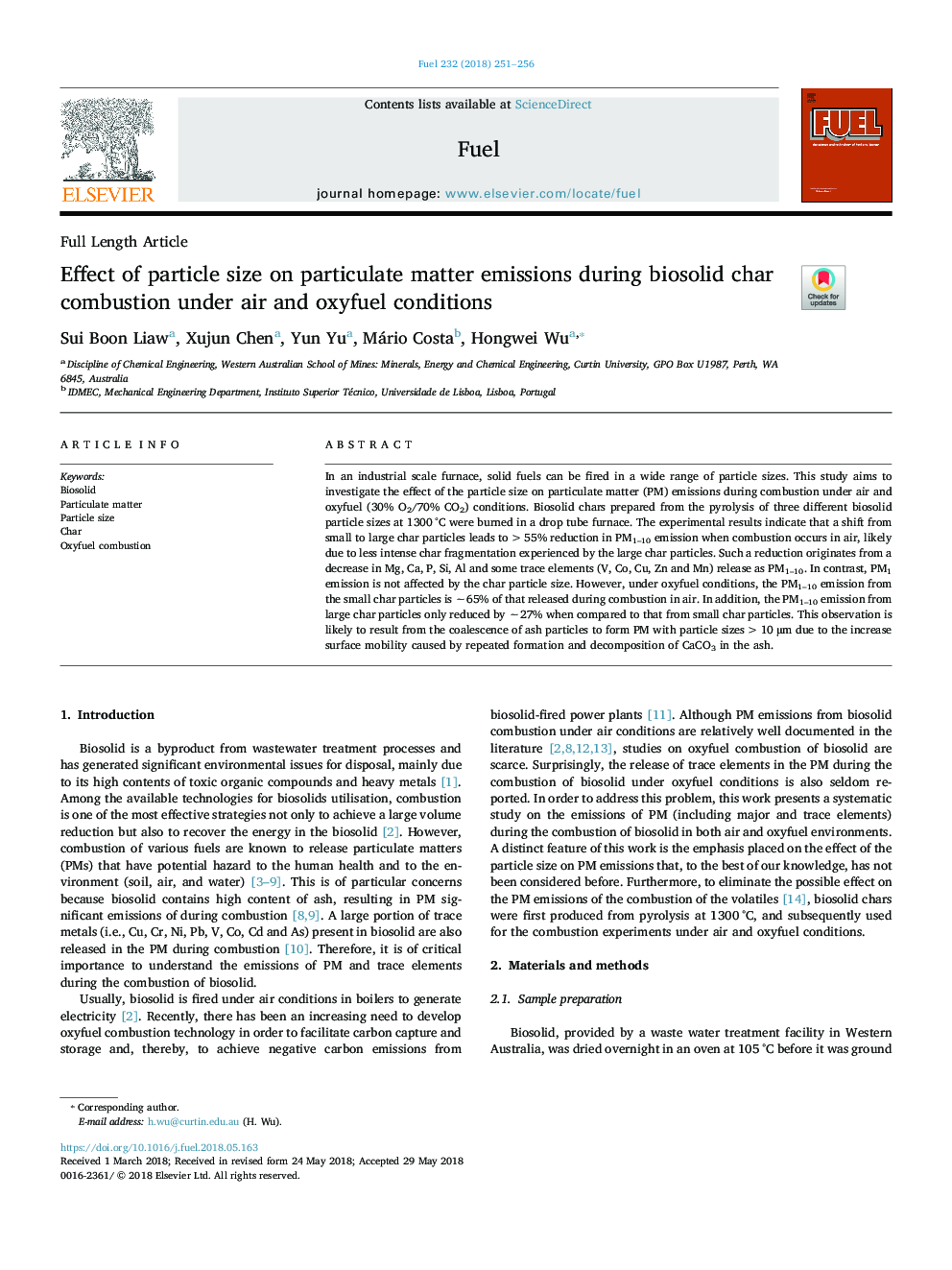| Article ID | Journal | Published Year | Pages | File Type |
|---|---|---|---|---|
| 6630384 | Fuel | 2018 | 6 Pages |
Abstract
In an industrial scale furnace, solid fuels can be fired in a wide range of particle sizes. This study aims to investigate the effect of the particle size on particulate matter (PM) emissions during combustion under air and oxyfuel (30% O2/70% CO2) conditions. Biosolid chars prepared from the pyrolysis of three different biosolid particle sizes at 1300â¯Â°C were burned in a drop tube furnace. The experimental results indicate that a shift from small to large char particles leads to >55% reduction in PM1-10 emission when combustion occurs in air, likely due to less intense char fragmentation experienced by the large char particles. Such a reduction originates from a decrease in Mg, Ca, P, Si, Al and some trace elements (V, Co, Cu, Zn and Mn) release as PM1-10. In contrast, PM1 emission is not affected by the char particle size. However, under oxyfuel conditions, the PM1-10 emission from the small char particles is â¼65% of that released during combustion in air. In addition, the PM1-10 emission from large char particles only reduced by â¼27% when compared to that from small char particles. This observation is likely to result from the coalescence of ash particles to form PM with particle sizes >10â¯Âµm due to the increase surface mobility caused by repeated formation and decomposition of CaCO3 in the ash.
Related Topics
Physical Sciences and Engineering
Chemical Engineering
Chemical Engineering (General)
Authors
Sui Boon Liaw, Xujun Chen, Yun Yu, Mário Costa, Hongwei Wu,
